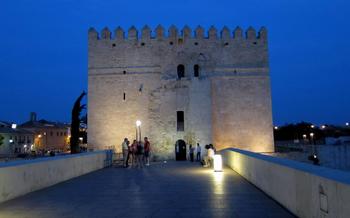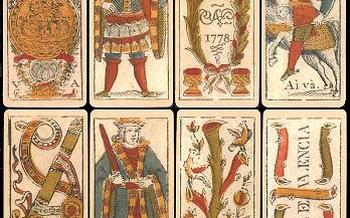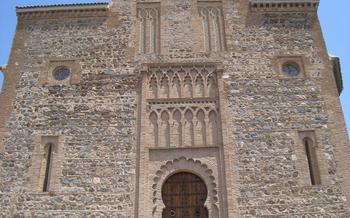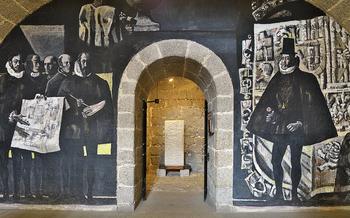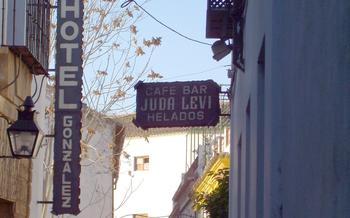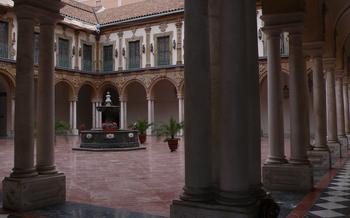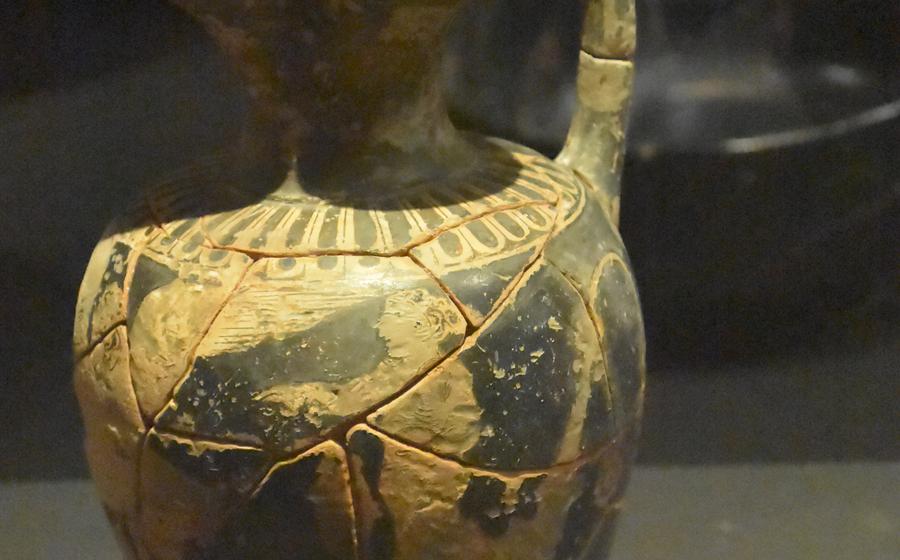
Guardamar Archaeological Museum
- Alicante's Antiquity Unveiled: Exploring the Guardamar Archaeological Museum
- Step Back in Time: A Journey Through Guardamar's Past
- Unearthing the Phoenician Legacy: A Maritime Empire's Imprint
- Roman Splendors: A Glimpse into an Imperial Era
- Visigothic Treasures: A Legacy of Art and Spirituality
- Medieval Enchantments: A Tapestry of Islamic and Christian Heritage
- Modern Marvels: Guardamar's Transformation in the 19th and 20th Centuries
- Interactive Experiences: Bringing History to Life
- Thematic Exhibitions: Exploring Special Topics in Depth
- Research and Conservation: Preserving Guardamar's Heritage
- Educational Outreach: Fostering a Love for History
- Accessibility for All: Embracing Inclusivity
- Museum Shop: A Treasure Trove of Souvenirs
- Events and Activities: Engaging the Community
- Insider Tip: Unforgettable Photo Opportunities
Alicante's Antiquity Unveiled: Exploring the Guardamar Archaeological Museum
The Guardamar Archaeological Museum stands as a testament to the rich and diverse history of Guardamar del Segura, a coastal town in the Alicante province of Spain. A visit to this museum offers a captivating journey through time, shedding light on the town's ancient past and its significance as a melting pot of cultures.
The museum's collection boasts a treasure trove of artifacts unearthed from archaeological excavations conducted in and around Guardamar. These artifacts provide valuable insights into the town's evolution from a humble fishing village to a thriving hub of trade and commerce, influenced by various civilizations that left their mark on the region.
Located in the heart of Guardamar, the museum is easily accessible by foot, bicycle, or public transportation. It welcomes visitors of all ages and backgrounds, offering a range of educational and interactive experiences that bring history to life. Whether you're a history buff, an archaeology enthusiast, or simply looking to discover the hidden gems of Alicante, the Guardamar Archaeological Museum promises an enriching and memorable experience.
The museum's doors are open to the public from Tuesday to Sunday, with extended hours during the summer months. Admission fees are affordable, with discounts available for students, seniors, and groups. Guided tours are offered in multiple languages, providing visitors with a deeper understanding of the exhibits and their historical significance. To book a guided tour, simply contact the museum in advance to reserve your spot.
Step Back in Time: A Journey Through Guardamar's Past
The Guardamar Archaeological Museum takes visitors on a captivating journey through the town's rich and multifaceted history, showcasing a diverse collection of artifacts arranged in chronological order. Highlights of the collection include:
-
Prehistoric Era: Discover stone tools, pottery fragments, and other relics that provide a glimpse into the earliest human settlements in the area.
-
Phoenician Period: Marvel at intricately carved stone sculptures, ceramic vessels, and jewelry that attest to the vibrant maritime trade and cultural influence of the Phoenicians.
-
Roman Empire: Unearth the grandeur of Roman civilization through architectural elements, pottery, coins, and everyday objects that shed light on the town's transformation into a thriving Roman colony.
-
Visigothic Era: Explore the fusion of Roman and Germanic cultures through exquisite jewelry, ceramics, and religious artifacts that showcase the Visigoths' unique artistic style.
-
Medieval Period: Witness the Islamic and Christian heritage of Guardamar through archaeological evidence of Islamic architecture, pottery, and metalwork, as well as artifacts that illustrate the town's transition to Christian rule.
-
Modern Era: Delve into Guardamar's transformation in the 19th and 20th centuries through architectural landmarks, tourism memorabilia, and objects that narrate the town's journey into becoming a popular tourist destination.
The museum's exhibits are carefully curated to provide a comprehensive overview of Guardamar's past, offering visitors a deeper understanding of the town's cultural roots and its significance as a historical crossroads.
Unearthing the Phoenician Legacy: A Maritime Empire's Imprint
The Phoenicians, renowned for their seafaring prowess and commercial acumen, left an indelible mark on Guardamar's history. The museum houses a significant collection of artifacts that attest to their presence and influence in the region. Among the highlights are intricately carved stone anchors, remnants of their shipbuilding prowess. These anchors, with their distinctive shapes and sizes, offer a glimpse into the advanced maritime technology that enabled the Phoenicians to traverse the Mediterranean Sea, establishing trading networks that spanned vast distances.
The museum also showcases a rich array of Phoenician pottery, adorned with intricate geometric patterns and vibrant colors. These ceramic vessels, used for both everyday purposes and ceremonial rituals, provide insights into the artistic sensibilities and cultural practices of this ancient civilization. Visitors can admire the delicate craftsmanship and symbolism embedded in these artifacts, which often depict scenes from mythology or everyday life.
Furthermore, the museum features a collection of bronze and silver jewelry, demonstrating the Phoenicians' mastery of metalworking. These exquisite pieces, adorned with intricate filigree and gemstones, showcase their artistic virtuosity and love of ornamentation. The jewelry not only served as personal adornment but also held cultural and religious significance, reflecting the Phoenicians' beliefs and social customs.
Roman Splendors: A Glimpse into an Imperial Era
The Roman era left an indelible mark on Guardamar, transforming it into a prosperous and thriving town. The Guardamar Archaeological Museum proudly showcases an array of artifacts that illuminate this significant period. Among the highlights are architectural fragments that reveal the grandeur of Roman construction. Intricate pottery and ceramic vessels provide a glimpse into the everyday lives of the Roman inhabitants, while bronze and iron tools offer insights into their agricultural and craft-based economy.
Through these exhibits, visitors can trace the evolution of Guardamar from a small Iberian settlement to a flourishing Roman municipium. The museum's collection of coins, inscriptions, and sculptures further enriches our understanding of Roman administration, trade, and religious practices in the region. Step into the Guardamar Archaeological Museum and immerse yourself in the splendor of Rome, experiencing firsthand the legacy of an empire that shaped the course of history.
Visigothic Treasures: A Legacy of Art and Spirituality
The Visigoths, a Germanic people, ruled over much of the Iberian Peninsula from the 5th to the 8th centuries. Their arrival in Guardamar left a significant imprint on the town's history and culture. The Guardamar Archaeological Museum showcases a remarkable collection of Visigothic artifacts that offer insights into their artistic prowess and spiritual beliefs.
One of the highlights of the Visigothic collection is a stunning gold necklace, intricately crafted with gemstones and delicate filigree work. This exquisite piece exemplifies the Visigoths' mastery of metalworking and their love of ornamentation. Another highlight is a collection of ceramic vessels, adorned with intricate geometric patterns and Christian symbols. These ceramics provide a glimpse into the everyday life of the Visigoths and their culinary traditions.
The museum also features a number of Visigothic religious artifacts, including bronze crosses and stone altars. These objects attest to the Visigoths' deep Christian faith and their commitment to spreading Christianity throughout the region. The fusion of Roman and Germanic elements in Visigothic art is particularly evident in these religious artifacts, showcasing the unique cultural blend that characterized this period.
Medieval Enchantments: A Tapestry of Islamic and Christian Heritage
During the Islamic period, Guardamar served as a frontier town, a strategic location on the border between Muslim and Christian territories. Archaeological excavations have revealed remnants of Islamic architecture, including fortifications, mosques, and baths. These structures showcase the town's role as a bustling hub of trade and cultural exchange.
Islamic pottery and metalwork discovered in Guardamar provide further evidence of the town's vibrant cultural scene. These artifacts display intricate designs and motifs, reflecting the artistic traditions of the Islamic world. The fusion of Islamic and Roman influences can be seen in many of these objects, demonstrating the town's unique position as a melting pot of cultures.
With the transition to Christian rule, Guardamar's cultural landscape underwent a transformation. Christian churches and monasteries were constructed, and the town's architecture began to reflect Gothic and Renaissance influences. This period of transition left a lasting imprint on Guardamar, creating a fascinating blend of Islamic and Christian heritage.
Modern Marvels: Guardamar's Transformation in the 19th and 20th Centuries
The 19th and 20th centuries witnessed a remarkable transformation in Guardamar, largely driven by the rise of tourism. As people began to discover the town's beautiful beaches, salubrious climate, and rich cultural heritage, Guardamar evolved into a popular tourist destination.
The influx of visitors led to the construction of new hotels, restaurants, and other tourist-oriented businesses. The town's infrastructure was also improved, with the construction of roads, bridges, and other public works.
In addition to its natural beauty, Guardamar is also home to a number of architectural landmarks from the modern era. These include the Casa Consistorial, a beautiful town hall building completed in 1897, and the Iglesia de San Jaime, a neoclassical church built in the early 20th century.
These architectural landmarks, along with the town's charming streets and squares, offer a glimpse into Guardamar's rich history and its transformation into a modern tourist destination.
Interactive Experiences: Bringing History to Life
The Guardamar Archaeological Museum offers a variety of interactive experiences to engage visitors and bring history to life. Workshops and demonstrations provide hands-on opportunities to learn about ancient crafts and techniques. Visitors can try their hand at pottery, weaving, or metalworking, using traditional tools and materials. These activities not only provide a fun and educational experience but also help to foster a deeper understanding of the daily lives of people who lived in Guardamar centuries ago.
Multimedia presentations and virtual reality exhibits transport visitors back in time, allowing them to immerse themselves in the sights and sounds of the past. Interactive displays and touchscreens offer visitors the chance to explore artifacts in greater detail, learning about their history and significance. These cutting-edge technologies enhance the museum experience, making it more engaging and accessible to visitors of all ages.
Educational programs for children and families are a key part of the museum's mission to promote a love for history and archaeology. These programs include guided tours, workshops, and storytelling sessions designed to spark children's curiosity and imagination. Through interactive activities and hands-on learning, children can discover the wonders of the past and develop a lifelong appreciation for history.
Thematic Exhibitions: Exploring Special Topics in Depth
The Guardamar Archaeological Museum frequently organizes thematic exhibitions to delve deeper into specific aspects of the town's history and culture. These exhibitions offer a unique opportunity for visitors to explore specialized topics and gain a comprehensive understanding of Guardamar's rich heritage.
Collaborations with other museums, universities, and research institutions enable the museum to present artifacts, documents, and multimedia presentations that provide a fresh perspective on Guardamar's past. Temporary exhibitions allow the museum to showcase the latest archaeological discoveries, emerging research, and innovative interpretations of historical events.
Engaging with experts and researchers during these exhibitions provides visitors with the chance to ask questions, share insights, and contribute to the ongoing exploration of Guardamar's history. The museum's commitment to thematic exhibitions enriches the visitor experience by offering a deeper dive into the town's diverse cultural heritage and its significance in the broader context of regional and national history.
Research and Conservation: Preserving Guardamar's Heritage
The Guardamar Archaeological Museum is not only a place to showcase artifacts but also an active hub for archaeological research and conservation. The museum's team of experts is dedicated to uncovering the secrets of Guardamar's past through ongoing excavations and research projects. They meticulously document their findings, ensuring that future generations can benefit from this knowledge.
The museum also plays a crucial role in preserving and restoring the artifacts in its collection. Conservators work tirelessly to stabilize and protect these delicate objects, using specialized techniques and materials. From ancient pottery to intricate jewelry, each artifact receives the utmost care to ensure its longevity.
Moreover, the museum collaborates closely with universities and research institutions to advance the study of Guardamar's history. Through joint projects, conferences, and publications, the museum shares its findings with the wider academic community, contributing to a deeper understanding of the region's rich past.
Educational Outreach: Fostering a Love for History
The Guardamar Archaeological Museum extends its influence beyond its walls through a robust educational outreach program, designed to ignite a passion for history in the hearts of young and old alike. A cornerstone of this program is the collaboration with local schools, where museum educators conduct interactive workshops and guided tours, bringing the wonders of archaeology and local heritage to life for students. These sessions not only provide valuable insights into the past but also cultivate critical thinking skills and encourage a lifelong appreciation for cultural preservation.
Complementing these school programs, the museum also hosts a series of captivating lectures, workshops, and community events throughout the year. These events offer unique opportunities for the public to engage with experts in archaeology, history, and related fields. From in-depth discussions on specific historical periods to hands-on workshops on pottery-making or ancient cooking techniques, these events cater to a diverse audience, fostering a sense of community and shared learning.
By nurturing a love for history through educational outreach initiatives, the Guardamar Archaeological Museum plays a vital role in preserving and promoting the rich cultural heritage of the region, ensuring that future generations continue to appreciate and protect the treasures of the past.
Accessibility for All: Embracing Inclusivity
The Guardamar Archaeological Museum is committed to providing an inclusive and accessible experience for all visitors. Wheelchair ramps and elevators ensure that all levels of the museum are accessible to visitors with disabilities. Clearly marked signage and Braille labels assist visually impaired visitors in navigating the exhibits. Multilingual signage and audio guides in various languages cater to international visitors and those with hearing impairments. The museum also offers educational programs and events designed for diverse audiences, including workshops for children with special needs and guided tours in sign language. Through these initiatives, the museum strives to create a welcoming and inclusive environment where everyone can explore and learn about Guardamar's rich history.
Museum Shop: A Treasure Trove of Souvenirs
The Guardamar Archaeological Museum's gift shop is a treasure trove of unique and meaningful souvenirs that will remind you of your visit to this fascinating site. Browse through a carefully curated selection of books, replicas, and locally-crafted items inspired by the museum's collection. Discover books that delve deeper into the history and archaeology of Guardamar, written by renowned experts in the field. Take home replicas of ancient artifacts, such as Phoenician coins, Roman pottery, or Visigothic jewelry, to cherish as a tangible connection to the past. Support the museum's educational and conservation efforts by purchasing locally-crafted souvenirs that showcase the region's rich cultural heritage. Whether you're looking for a gift for a loved one or a special memento for yourself, the Guardamar Archaeological Museum's gift shop has something for everyone.
Events and Activities: Engaging the Community
The Guardamar Archaeological Museum is not just a repository of ancient artifacts; it's also a vibrant hub for cultural events, festivals, and workshops that bring the community together and foster a sense of shared heritage. These events offer visitors a chance to engage with history in a hands-on, interactive way and to connect with the people who are passionate about preserving Guardamar's past.
From traditional craft demonstrations to educational workshops for children and adults, the museum's events calendar is packed with opportunities to learn, create, and celebrate. Visitors can immerse themselves in the art of pottery-making, learn about ancient cooking techniques, or discover the secrets of traditional weaving. These events provide a unique platform for local artisans and experts to share their knowledge and skills with the community, creating a vibrant exchange of ideas and experiences.
The museum also hosts regular festivals and celebrations that showcase Guardamar's rich cultural heritage. These events often feature live music, dance performances, food stalls, and reenactments that bring the town's history to life. Visitors can mingle with locals, sample traditional cuisine, and enjoy the festive atmosphere as they explore the museum's exhibits and participate in various activities.
By organizing these events and activities, the Guardamar Archaeological Museum plays a vital role in fostering a sense of community and belonging among residents and visitors alike. It creates a space where people can come together to celebrate their shared heritage, learn from each other, and create lasting memories.
Insider Tip: Unforgettable Photo Opportunities
The Guardamar Archaeological Museum is a treasure trove of photo opportunities, with artifacts, exhibits, and architecture that beg to be captured. To make the most of your visit, here are some insider tips:
-
Natural Light Magic: Time your visit to coincide with the golden hours of sunrise or sunset, when the natural light floods the museum, casting a warm glow on the artifacts.
-
Composition is Key: Pay attention to the composition of your shots. Experiment with different angles, perspectives, and focal points to create visually appealing images.
-
Capture the Details: Don't just take wide shots of the exhibits. Zoom in on the intricate details of artifacts, such as the delicate carvings on a Phoenician amulet or the worn patina of a Roman coin.
-
Share Your Story: Share your photos on social media, using hashtags like #GuardamarArchaeologicalMuseum and #AlicanteHistory, and tag the museum's official accounts. Inspire others to explore this hidden gem and contribute to its growing community of enthusiasts.
